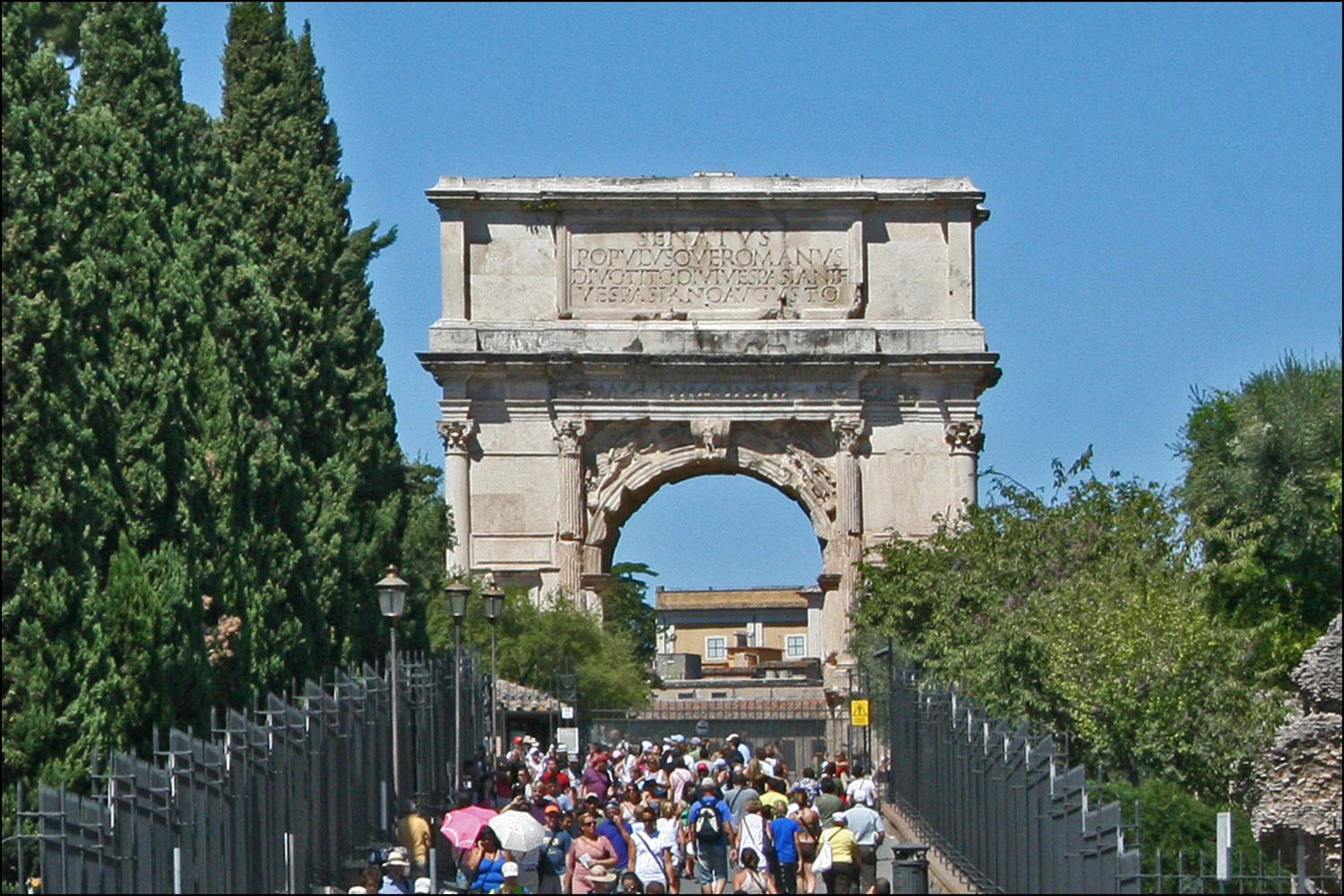

The prints could be purchased individually by tourists and collectors, but they were also purchased in larger groups that were often bound together in an album.

During their Roman publishing careers, the two editors-who worked together between 15-started the production of prints of architecture, statuary, and city views related to ancient and modern Rome. The Speculum originated in the publishing activities of Antonio Salamanca and Antonio Lafreri (Lafrery). 187, described as the "Arco di Tito Vespasiano". The plate appears in the Index of Lafreri at n. The work belongs to the Speculum Romanae Magnificentiae, the earliest iconography of ancient Rome. According to Pierre Gros, "the other original aspect of this monument consists in the concentration of the figurative decoration inside the arch itself: the bearers carrying the spoils of the temple of the Jewish capital on the south pillar and the quadriga of Titus crowned by a Victory on the north pillar represent the justification of the apotheosis of this emperor, which the eagle of Jupiter carries in flight to the center of the inner vault, in a medallion that occupies the space of nine coffers"(cf. In the Renaissance it was very revered for the meaning that was attributed to the trophies taken from the Temple of Jerusalem. The construction took place after the divinization of Titus in 81 AD. The use of composite capitals, in a triumphal arch, represented a novelty for the time. With a single travertine base, the arch was built with large blocks of pentelic marble and Carrara marble. Part of the Speculum Romanae Magnificentiae.Įxample of the second state of four, with Lafreri’s imprint and with the plate now reduced by about 5 mm each side (size 375x498 mm).Īt the top we find the title: "SENATVS POPVLVS. LAFRERI / SEQVANVS EXCVD / ROMAE ∞ - D - XL – VIII”. Modern arches have been modeled on the Arch of Titus, especially Napolean's Arc de Triomphe in Paris which maintains the same proportions but is larger.Engraving, 1548, signed and dated at bottom right: “ANT. This scene depicts the deification or apotheosis of Titus. At the top of the inside of the arch is a sculpted bust of Titus being elevated to heaven on the wings of an eagle. The fasces were a symbol of the emperor’s presence and power. The lictors, the emperor’s attendants, can be seen holding a bundle of sticks called the fasces. The figure behind him is the goddess, Victory, holding a crown over his head. Titus is driving a four-horse chariot or quadriga. The north relief on the interior depicts Titus himself during his triumphal procession. These three items were housed in the Temple of Jerusalem and their presence represents the conquering of the Romans over Jerusalem. On the south relief, the spoils of war are displayed as part of the procession: Trumpets, the table of Showbread, and the menorah. The reliefs depict the triumphal procession of Titus, honored for his destruction of Jerusalem. The arch is famous for its reliefs located on the north and south side of the interior. Coins were also minted with a captured Judea personified. This body is often interpreted as the personification of the River Jordan, a symbol of Judea where Jerusalem is located. The procession depicted in the eastern facing frieze includes a corpse being carried on a stretcher (ferculum). Its completion must be after 81CE because Titus has to be dead in order to be deified. It is thought that Domitian, the next emperor, had the arch built to honor his brother. Uniquely, the arch is not specifically mentioned in any historical text so the exact date of its construction is debated. Titus succeeded his father and ruled for only two years from 79-81 CE. It was dedicated to the Divine Emperor Titus, son of Vespasian, and it honored his victory over Jerusalem in 70CE. It is the entry point of the Sacra Via that runs along the northern border of the forum. The Arch of Titus towers over the east end of the Roman Forum.


 0 kommentar(er)
0 kommentar(er)
